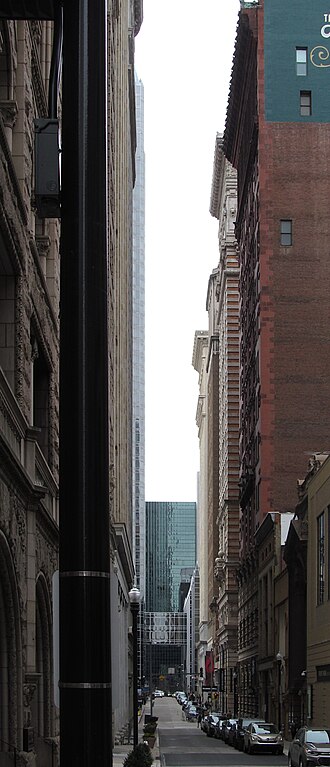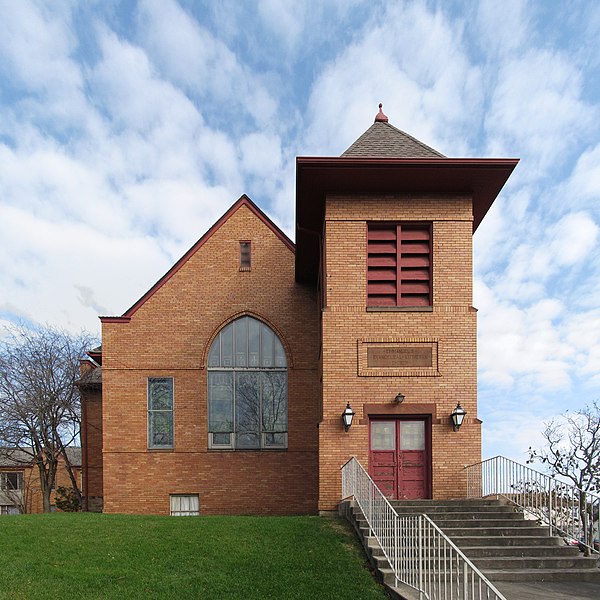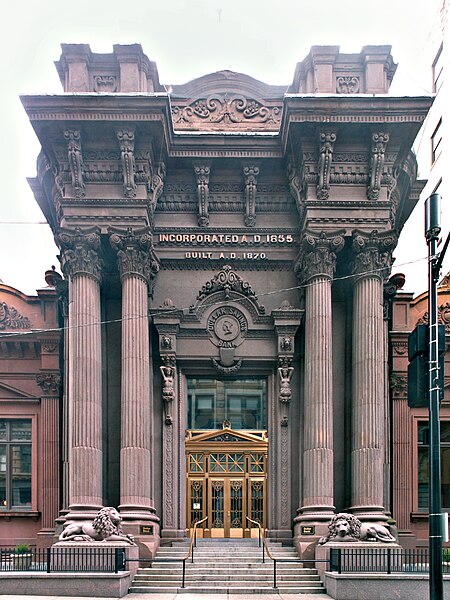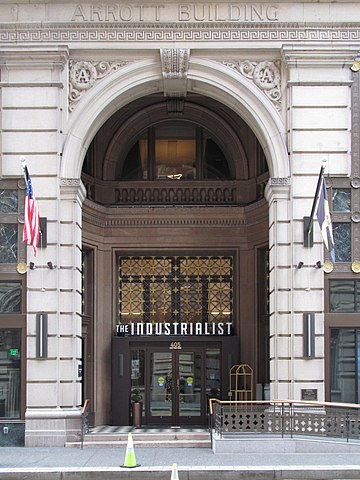
“Make no little plans,” said Daniel Burnham; “they have no magic to stir men’s blood and probably themselves will not be realized.” The Chicago Tribune tells us the interesting story of the long search for the original source of that quotation, and the determination that it was in fact what Burnham said. It is probably the second-most-famous quotation from an architect in history: only Louis Sullivan’s “Form follows function” has been heard more often.
Outside Chicago, Pittsburgh was where the great Burnham was most prolific. Many of our most famous buildings—the Oliver Building, Penn Station, the Frick Building, and a good number of others—are by Burnham. Most of them are colossal. But the old Union Trust Company building—now the Engineers’ Society of Western Pennsylvania—was his first work here, and it is on a small scale. Small, but rich and perfect in its way. The front is a traditional Doric temple; the treatment of the top storey behind the pediment seems to enclose the temple in its own perfect world, insulated from the ugly realities of Fourth Avenue commercialism around it. It was built in 1898, and it can be seen as an answer and a rebuke to the tasteless extravagance of Isaac Hobbs’ 1870 Dollar Bank building across the street.




















